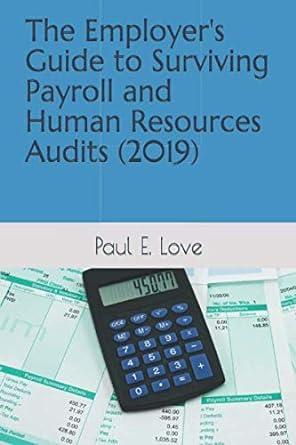Question
When translating foreign currency financial statements for a company whose functional currency is the U.S. dollar, which of the following accounts is translated using historical
When translating foreign currency financial statements for a company whose functional currency is the U.S. dollar, which of the following accounts is translated using historical exchange rates?
Notes Payable Equipment
a. Yes Yes
b. Yes No
c. No No
d. No Yes
2. Under the temporal method, monetary assets and liabilities are translated by using the exchange rate existing at the:
a. beginning of the current year.
b. date the transaction occurred.
c. balance sheet date.
d. None of these.
3. The process of translating the accounts of a foreign entity into its functional currency when they are stated in another currency is called:
a. verification.
b. translation.
c. remeasurement.
d. None of these.
4. Which of the following would be restated using the average exchange rate under the temporal method?
a. cost of goods sold
b. depreciation expense
c. amortization expense
d. None of these
5. Paid-in capital accounts are translated using the historical exchange rate under:
a. the current rate method only.
b. the temporal method only.
c. both the current rate and temporal methods.
d. neither the current rate nor temporal methods.
6. Which of the following would be restated using the current exchange rate under the temporal method?
a. Marketable securities carried at cost.
b. Inventory carried at market.
c. Common stock.
d. None of these.
Step by Step Solution
There are 3 Steps involved in it
Step: 1

Get Instant Access to Expert-Tailored Solutions
See step-by-step solutions with expert insights and AI powered tools for academic success
Step: 2

Step: 3

Ace Your Homework with AI
Get the answers you need in no time with our AI-driven, step-by-step assistance
Get Started


